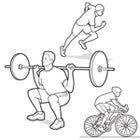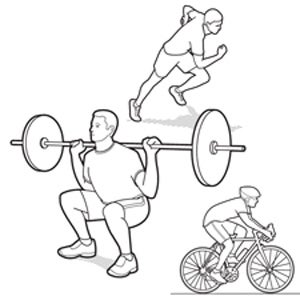Along with avalanche training, a game plan, an experienced partner, and supplies, a fit body should be on your list of essentials for ski mountaineering. If you’re not in good enough shape, the trip could be treacherous and downright dangerous.
Ate

Here are a couple keys to focus on:
1. Your level of conditioning. This will have the most impact on your performance. Depending on the intensity of the exercise, your body uses different energy systems to supply power to your muscles. Improving these systems can help you avoid fatigue and build the power needed for quick reactions and difficult turns.
To condition all your body’s energy systems, perform an interval training session twice a week leading up to your trip. ().
2. Whether you’re Alpine skiing, telemarking, or snowboarding, single-leg strength and stability are crucial for navigating the climb and the descent. Use these moves:
- Split Squat – Back Foot Up: Place your back foot on a bench and step out into a lunge, holding dumbbells at arm’s length at your sides. Lower your hips toward the floor. Without letting your back knee touch the ground, return to the starting position by pushingwith your front leg.
- Box Blasts: Stand with one foot flat on a box, the other on the floor behind you, and your arms back with elbows bent to 90 degrees. Jump vertically by swinging your arms forward and exploding through your front hip, knee and ankle. Switch legs in midair so you land with the opposite foot on the box. Without pausing, repeat the movement, exploding back up with your opposite leg.
— Darcy Norman
Related Articles


